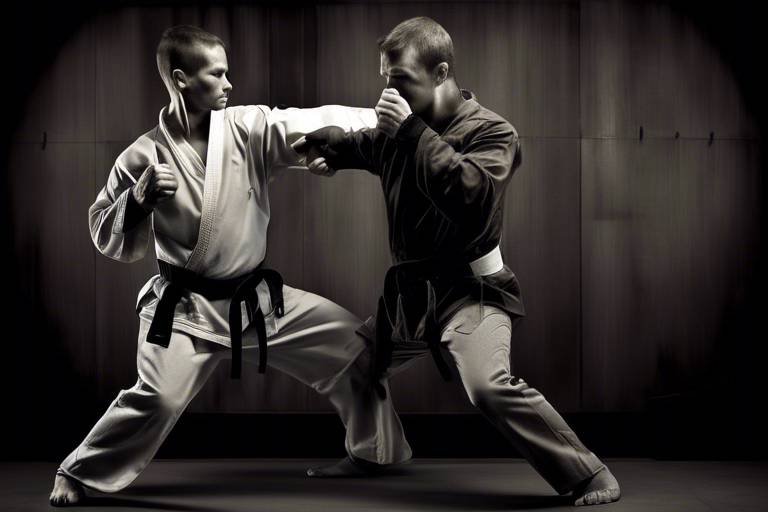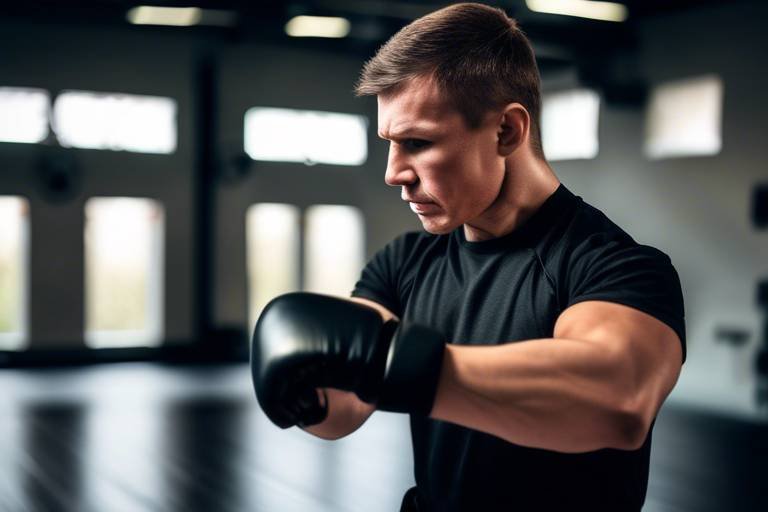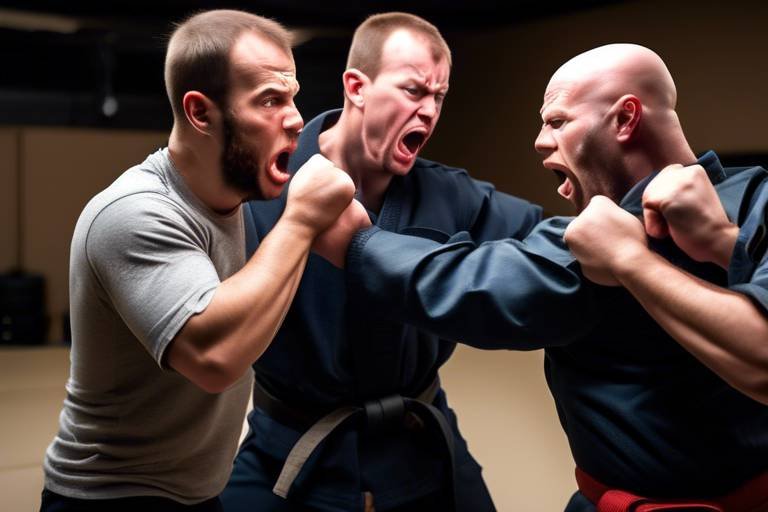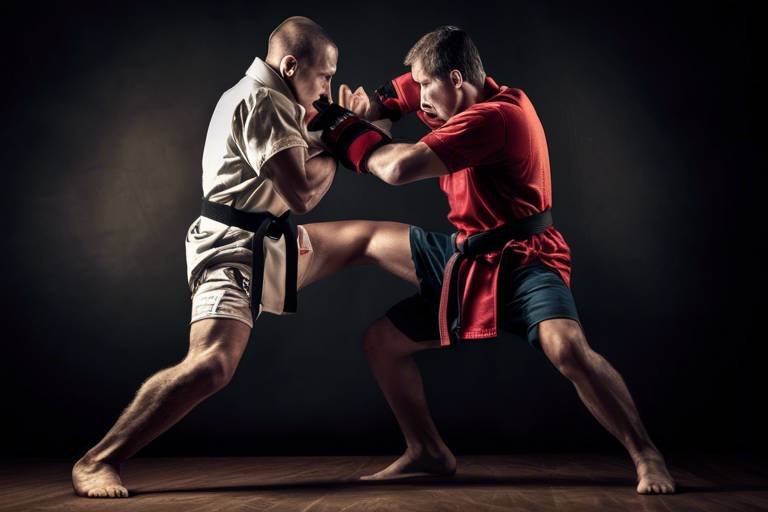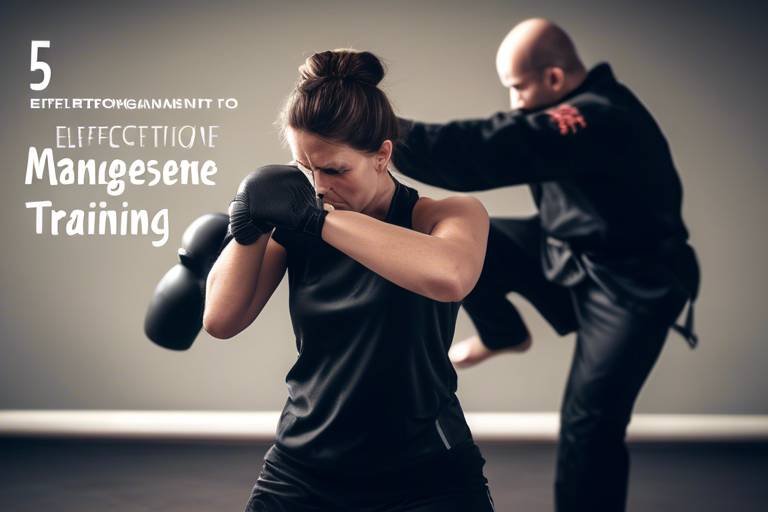Boost Your Child's Confidence with Self-Defense Training
In today's world, where uncertainty often looms large, equipping our children with the right tools for personal safety is essential. Self-defense training is more than just learning how to throw a punch or perform a kick; it’s a transformative journey that empowers children. Imagine your child walking into a room with their head held high, exuding confidence and self-assuredness. This is the kind of impact self-defense training can have! Not only does it teach practical skills, but it also instills a sense of discipline, resilience, and respect for oneself and others. By engaging in self-defense, children learn to navigate challenges with a calm demeanor, turning potential threats into opportunities for growth.
Self-defense training is designed to equip children with essential skills that are crucial for personal safety. But beyond just the physical techniques, it fosters a deep sense of self-awareness and confidence. Think of it as a toolbox filled with various tools—each one representing a skill or lesson that can be utilized in different life situations. Through this training, children learn the importance of non-violent conflict resolution, emphasizing that physical confrontation is not always the answer. Instead, they are taught to assess situations critically and to choose the best course of action, which might often involve walking away or seeking help.
Engaging in self-defense training comes with a myriad of benefits that extend far beyond the dojo or training mat. It’s like planting a seed that grows into a sturdy tree, providing shade and shelter in various aspects of life. Here are some of the key advantages:
- Improved Physical Fitness: Self-defense training is a full-body workout, enhancing strength, flexibility, and endurance.
- Increased Self-Esteem: As children master new skills, their self-esteem naturally rises, leading to a more positive self-image.
- Ability to Handle Difficult Situations: Training equips children with the tools to remain composed under pressure, turning fear into focus.
One of the most immediate benefits of self-defense training is the enhancement of physical fitness. Through a variety of exercises and drills, children improve their coordination, balance, and overall health. Picture a child who once struggled with coordination suddenly mastering a roundhouse kick—this not only boosts their physical capabilities but also their confidence. The physical benefits of self-defense training contribute significantly to a child's overall well-being, making them feel stronger and more capable in their everyday lives.
Training programs often focus on building strength and agility. This isn’t just about being able to defend oneself; it’s about promoting a healthy lifestyle. Think of it as a fun way for children to stay active! As they engage in various drills and exercises, they develop muscle tone and improve their agility, which can also translate into better performance in sports and other physical activities.
Children learn to react quickly and effectively in challenging situations, which enhances their reflexes and improves their ability to assess and respond to potential threats. Imagine a child who, in a moment of panic, can rely on their training to make quick decisions. This skill is invaluable, not just in self-defense scenarios, but in everyday life where quick thinking is often required.
Self-defense training is also a powerful tool for fostering emotional resilience. It teaches children how to manage stress and anxiety, providing them with coping strategies that are beneficial in various life situations. Think about the last time you faced a stressful situation—did you wish you had a toolkit to help you navigate through it? That’s exactly what self-defense training offers to children. They learn to remain calm under pressure, which is a skill that will serve them well throughout their lives.
When it comes to selecting an appropriate self-defense program for your child, it’s crucial to consider various factors. Just like choosing a school, the right program should resonate with your child's needs and interests. Look for programs that are age-appropriate and tailored to your child's skill level. A great program will not only teach self-defense techniques but also create a positive and encouraging learning environment.
Researching an instructor's background and experience is essential. A qualified instructor will create a safe and supportive atmosphere, ensuring that children learn effectively and confidently. After all, you wouldn’t want your child to learn from someone who isn’t equipped to teach! Look for instructors with a solid track record and positive reviews from other parents.
Understanding the program's structure and curriculum will help parents assess its suitability for their child. Look for programs that emphasize safety, respect, and practical skills. A well-rounded curriculum will not only focus on physical techniques but also incorporate lessons on conflict resolution and emotional intelligence, ensuring that children walk away with a comprehensive skill set.
- What age is appropriate for self-defense training? Most programs cater to children as young as 5 years old, but it’s essential to find a program that suits your child’s maturity level.
- Is self-defense training safe? Yes! When conducted by qualified instructors in a controlled environment, self-defense training is safe and beneficial.
- How long does it take to see results? While some benefits are immediate, such as increased confidence, mastering self-defense techniques can take several months of consistent training.

Understanding Self-Defense Training
Self-defense training is more than just learning how to throw a punch or execute a kick; it’s about empowering children with the skills they need to protect themselves while fostering a sense of confidence and self-awareness. Imagine your child walking down the street, head held high, knowing that they possess the tools to handle any situation that may arise. This training emphasizes not only personal safety but also the importance of respect and the value of non-violent conflict resolution.
At its core, self-defense training teaches children to understand their own strength and capabilities. It’s about building a foundation of self-respect and awareness that spills over into every aspect of their lives. They learn to recognize potential threats and how to avoid dangerous situations, which is a crucial skill in today’s world. A well-rounded program will include various components, such as physical techniques, mental strategies, and emotional resilience.
In addition to physical self-defense techniques, children are taught to assess their surroundings and understand the importance of situational awareness. This skill is akin to having a sixth sense; it helps them to identify potentially risky situations before they escalate. For example, just like a cat that senses danger before it strikes, children learn to trust their instincts and make smart decisions about their safety.
Moreover, self-defense training encourages a culture of respect. Students are taught to respect themselves and others, which translates into better interactions with peers and adults alike. They learn that physical confrontation should always be a last resort and that there are often better ways to resolve conflicts. This understanding fosters a sense of community and encourages children to stand up for themselves and their friends in a constructive manner.
Ultimately, self-defense training serves as a comprehensive approach to personal safety. It equips children with practical skills while simultaneously instilling a sense of discipline and resilience. By participating in this type of training, children not only learn how to defend themselves but also gain invaluable life lessons that will benefit them for years to come.
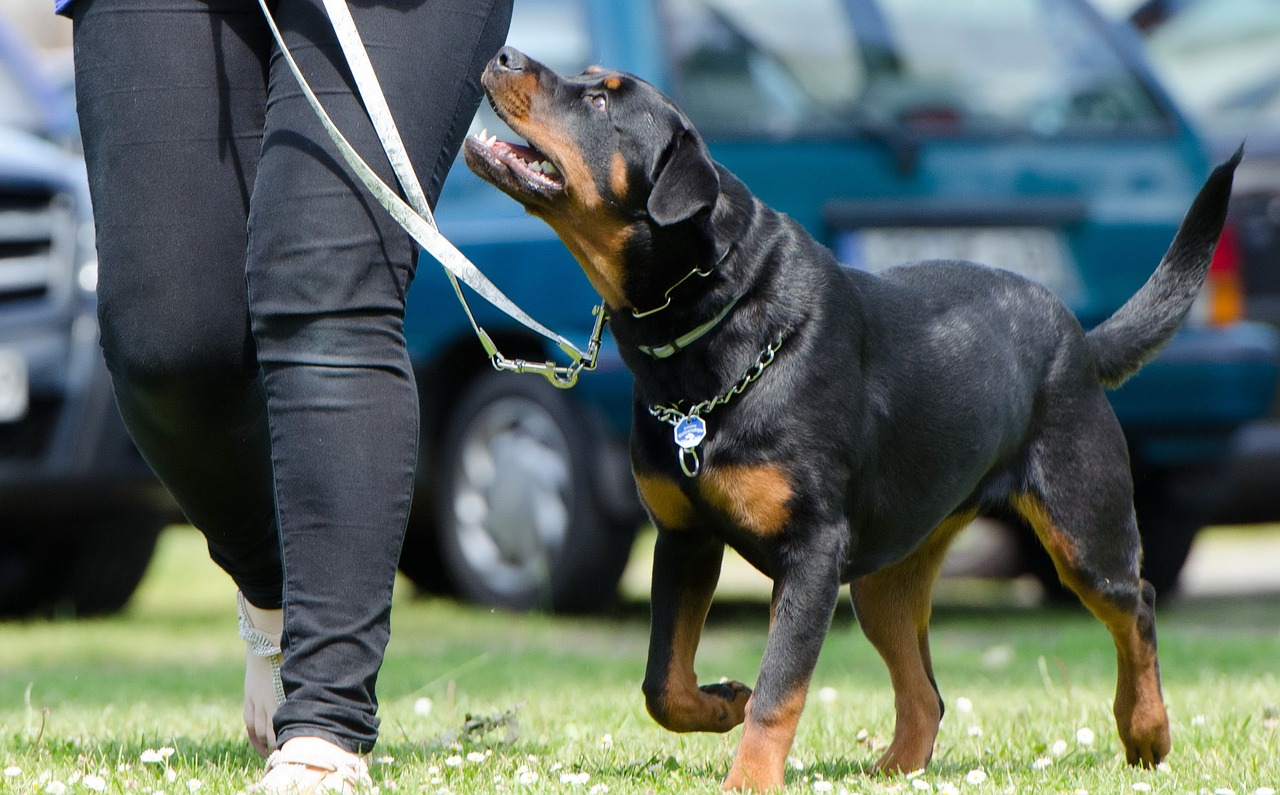
Benefits of Self-Defense for Children
Engaging in self-defense training offers a treasure trove of benefits for children. It’s not just about learning how to throw a punch or escape a hold; it’s about building a solid foundation for their overall development. Think of it as giving them a toolkit for life, equipping them with essential skills that extend far beyond the dojo or training mat. The confidence they gain from mastering new techniques can translate into various aspects of their lives, including academics, social interactions, and even family dynamics.
One of the most significant advantages of self-defense training is the boost in self-esteem. When children learn to defend themselves, they start to believe in their abilities. This newfound confidence can lead to them standing taller, speaking more assertively, and approaching challenges with a can-do attitude. Imagine a shy child who, after a few weeks of training, walks into a room full of peers with a smile, ready to engage rather than shrink back in fear. This transformation is nothing short of magical.
Moreover, self-defense training promotes physical fitness and coordination. The exercises involved often include a mix of strength training, cardio, and flexibility workouts. As children practice kicks, punches, and defensive maneuvers, they’re not just learning how to protect themselves—they’re also improving their overall health. This enhanced physical fitness doesn’t just make them stronger; it also boosts their energy levels and helps them stay active in other areas of life, such as sports or outdoor activities.
In addition to physical benefits, self-defense training teaches children how to handle difficult situations with composure and confidence. They learn to assess threats, make quick decisions, and react appropriately. This is crucial not only in self-defense scenarios but also in everyday life. For instance, if a child faces bullying or peer pressure, the skills they’ve learned can help them navigate these situations with a level head. They gain the ability to stand up for themselves and others, fostering a sense of respect and responsibility.
Another key aspect of self-defense training is the development of emotional and mental resilience. Children learn how to manage stress and anxiety through physical activity and mental focus. The discipline required in training teaches them patience and perseverance, valuable traits that will serve them well in school and beyond. They also learn the importance of setting goals—whether it's mastering a new technique or preparing for a belt test—and the satisfaction that comes from achieving those goals. This sense of accomplishment can be incredibly empowering.
To sum it all up, the benefits of self-defense training for children are multifaceted. From boosting self-esteem and improving physical fitness to enhancing emotional resilience and teaching conflict resolution, the skills they acquire are invaluable. It’s more than just self-defense; it's a holistic approach to nurturing well-rounded, confident individuals who are prepared to tackle life’s challenges head-on.
- Is self-defense training safe for children? Yes, when conducted by qualified instructors in a controlled environment, self-defense training is safe and beneficial for children.
- At what age can my child start self-defense training? Many programs welcome children as young as 4 or 5, but it’s essential to find a program that suits your child’s age and maturity level.
- Will self-defense training make my child more aggressive? No, self-defense training emphasizes respect, self-control, and non-violent conflict resolution. The goal is to empower, not to promote aggression.
- How often should my child train? Training frequency can vary, but consistent practice—ideally 1-3 times a week—helps reinforce skills and build confidence.
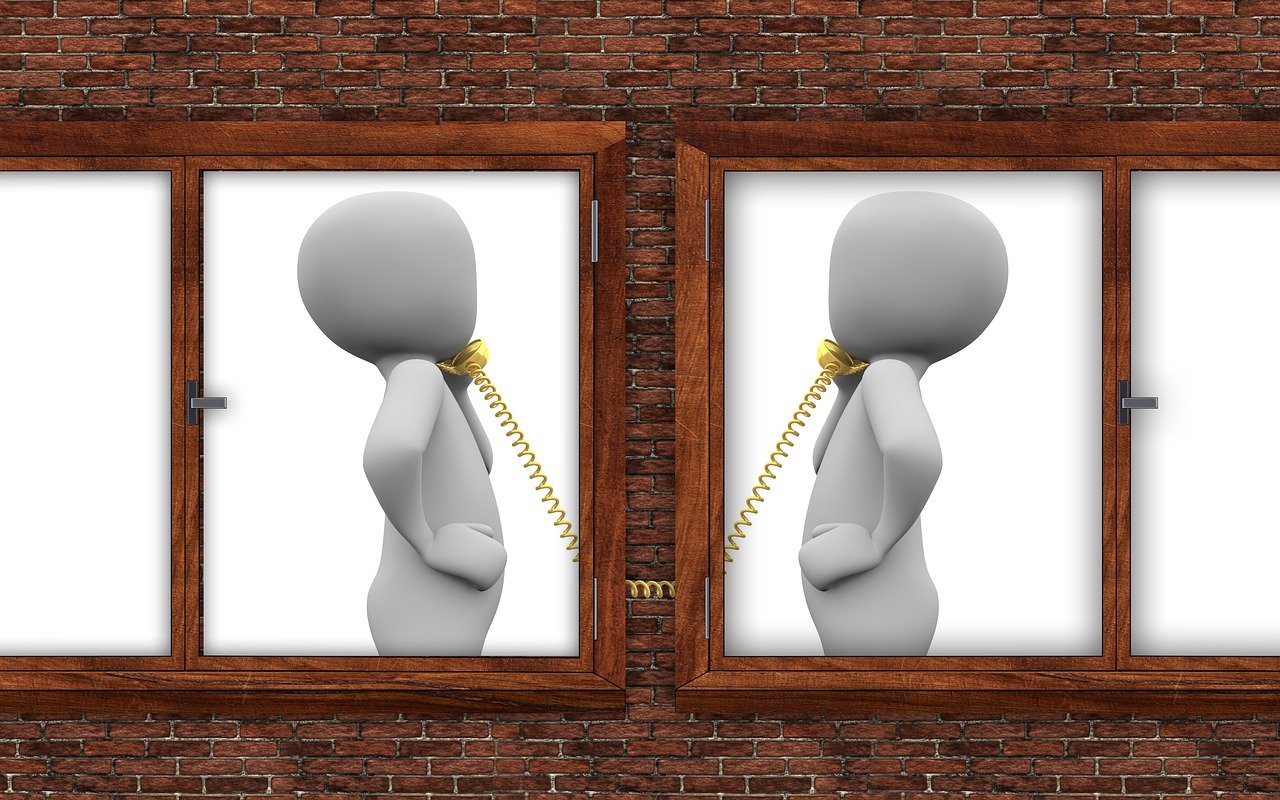
Physical Fitness and Coordination
This article explores how self-defense training can empower children, enhancing their confidence, discipline, and resilience while providing practical skills for personal safety.
Self-defense training teaches children essential skills to protect themselves while fostering confidence and self-awareness. It emphasizes personal safety, respect, and the importance of non-violent conflict resolution.
Engaging in self-defense training offers numerous benefits, including improved physical fitness, increased self-esteem, and the ability to handle difficult situations with composure and confidence.
Self-defense training is not just about learning how to throw a punch or execute a kick; it's a holistic approach that significantly enhances physical fitness and coordination. When children participate in these training sessions, they engage in a variety of exercises that promote cardiovascular health, flexibility, and muscle strength. This multifaceted approach not only helps them defend themselves but also contributes to their overall well-being.
For instance, children often find themselves running, jumping, and practicing various movements that boost their agility and balance. These activities are essential, as they improve their motor skills, making everyday activities easier and more enjoyable. Imagine your child, once hesitant and unsure, now confidently navigating playground equipment or participating in sports with newfound enthusiasm!
Moreover, the structured nature of self-defense classes encourages children to follow routines and develop discipline. They learn to respect their bodies and understand the importance of physical health. As they progress, they may notice improvements in their stamina and strength, which can be incredibly motivating. To illustrate this point, consider the following table that outlines some key physical benefits gained through self-defense training:
| Benefit | Description |
|---|---|
| Improved Cardiovascular Health | Engaging in high-energy drills enhances heart health and endurance. |
| Enhanced Coordination | Practicing techniques helps children develop better hand-eye coordination. |
| Increased Strength | Regular training builds muscle strength, benefiting overall physical performance. |
| Better Balance | Exercises improve balance, reducing the risk of falls and injuries. |
In addition to these physical benefits, self-defense training also enhances children’s reflexes and reaction times. They learn to respond swiftly and effectively to various scenarios, which is not only crucial for self-defense but also beneficial in daily life situations. Imagine your child being able to dodge a fast-moving object or react promptly in a game of catch. These skills translate into increased confidence, as they feel more capable in their physical abilities.
Ultimately, self-defense training provides children with the tools they need to navigate their physical world more effectively. It’s about more than just learning to defend oneself; it’s about fostering a sense of empowerment that can lead to a lifetime of healthy habits and self-confidence.
Self-defense training fosters emotional resilience, teaching children to manage stress and anxiety. It equips them with coping strategies that can be beneficial in various life situations.
Selecting an appropriate self-defense program is crucial for your child's experience. Consider factors such as age, skill level, and the instructor's qualifications to ensure a positive learning environment.
Researching an instructor's background and experience is essential. A qualified instructor will create a safe and supportive atmosphere, ensuring that children learn effectively and confidently.
Understanding the program's structure and curriculum will help parents assess its suitability for their child. Look for programs that emphasize safety, respect, and practical skills.
- What age is appropriate for self-defense training? Most programs cater to children as young as 5 years old, but it's important to find a class that matches your child's maturity level.
- Is self-defense training safe? Yes, when conducted by qualified instructors, self-defense training prioritizes safety and teaches children to avoid violence whenever possible.
- How long does it take to see results? Many children notice improvements in confidence and physical fitness within a few weeks of consistent training.
- Can self-defense training help with bullying? Absolutely! It equips children with the skills to handle confrontations and boosts their self-esteem, making them less likely to be targeted.

Building Strength and Agility
This article explores how self-defense training can empower children, enhancing their confidence, discipline, and resilience while providing practical skills for personal safety.
Self-defense training teaches children essential skills to protect themselves while fostering confidence and self-awareness. It emphasizes personal safety, respect, and the importance of non-violent conflict resolution.
Engaging in self-defense training offers numerous benefits, including improved physical fitness, increased self-esteem, and the ability to handle difficult situations with composure and confidence.
Self-defense training enhances physical fitness through various exercises, improving coordination, balance, and overall health. These physical benefits contribute to a child's confidence and well-being.
When it comes to self-defense training, is crucial. This training doesn't just make your child capable of defending themselves; it also instills a sense of power and control over their own body. Imagine your child, once timid and unsure, now moving with the grace and strength of an athlete. This transformation is not just physical but emotional.
Self-defense classes typically incorporate a variety of exercises designed to enhance both strength and agility. For example, activities such as push-ups, squats, and jumping drills are common. These exercises not only improve muscle tone but also promote better balance and coordination. As children learn to execute these movements, they become more aware of their bodies, which is a fantastic confidence booster.
Moreover, the structured environment of a self-defense class allows children to challenge themselves in a safe space. They can push their limits, try new techniques, and see tangible improvements in their physical abilities over time. This gradual progression fosters a sense of achievement that is hard to replicate elsewhere.
Here’s a brief overview of how strength and agility training can impact your child:
| Aspect | Benefits |
|---|---|
| Strength | Improves muscle tone and endurance, allowing for better performance in physical activities. |
| Agility | Enhances quickness and flexibility, crucial for effective self-defense maneuvers. |
| Balance | Develops stability which is essential for both self-defense techniques and everyday activities. |
| Coordination | Improves hand-eye coordination, making children more adept at responding to various situations. |
In addition to physical benefits, the mental aspect of building strength and agility is equally important. As children train, they learn to set goals and work towards achieving them. This process of goal-setting and accomplishment fosters resilience and a growth mindset, teaching them that hard work pays off. They start to realize that they can overcome challenges, both in the dojo and in life.
Self-defense training fosters emotional resilience, teaching children to manage stress and anxiety. It equips them with coping strategies that can be beneficial in various life situations.
Selecting an appropriate self-defense program is crucial for your child's experience. Consider factors such as age, skill level, and the instructor's qualifications to ensure a positive learning environment.
Researching an instructor's background and experience is essential. A qualified instructor will create a safe and supportive atmosphere, ensuring that children learn effectively and confidently.
Understanding the program's structure and curriculum will help parents assess its suitability for their child. Look for programs that emphasize safety, respect, and practical skills.
- What age is appropriate for self-defense training? Most programs cater to children as young as 5-6 years old, focusing on age-appropriate techniques.
- How long does it take to see results? While some benefits are immediate, like increased confidence, physical improvements typically take a few months of consistent training.
- Is self-defense training safe? Yes, when conducted by qualified instructors in a controlled environment, self-defense training is safe and beneficial.
- Can self-defense training help with bullying? Absolutely! It teaches children to stand up for themselves and handle difficult situations with confidence.
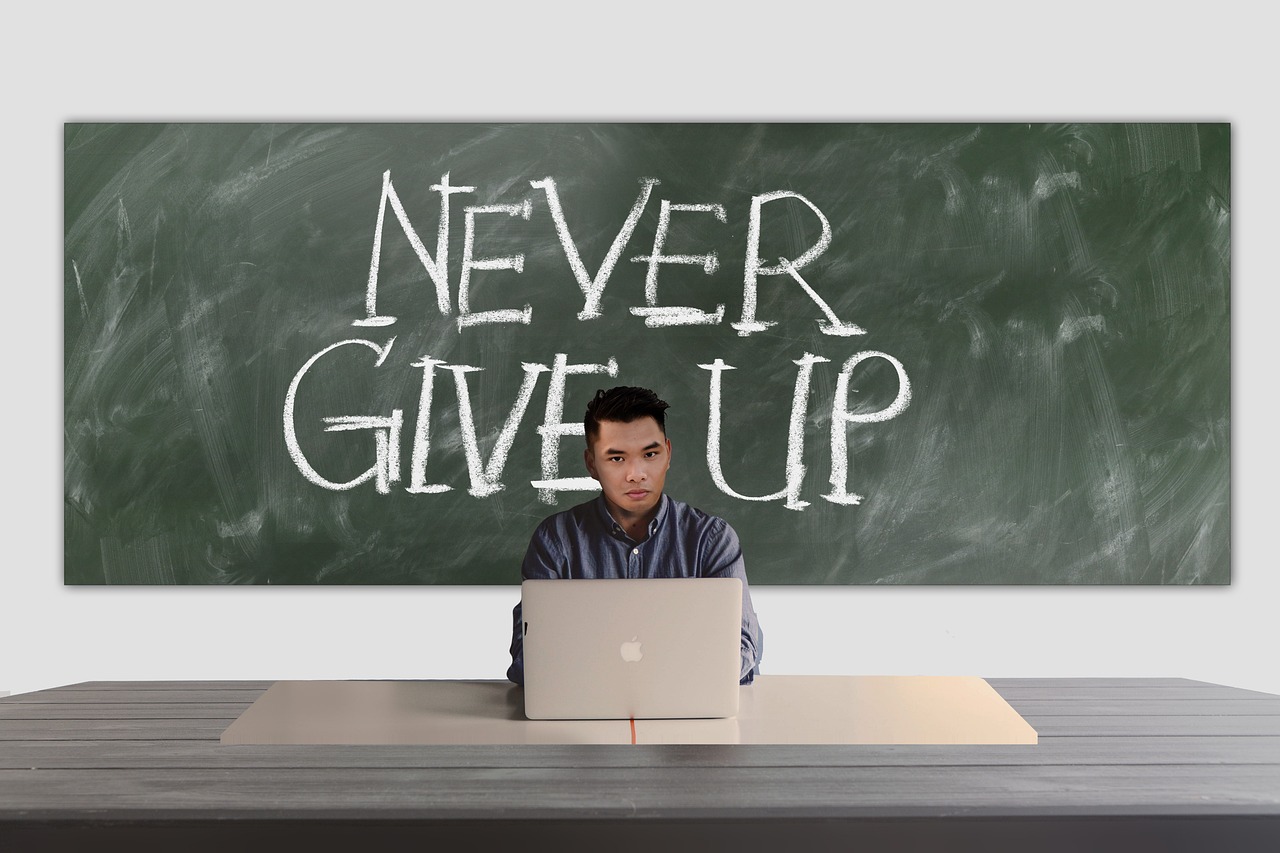
Enhancing Reflexes and Reaction Time
This article explores how self-defense training can empower children, enhancing their confidence, discipline, and resilience while providing practical skills for personal safety.
Self-defense training teaches children essential skills to protect themselves while fostering confidence and self-awareness. It emphasizes personal safety, respect, and the importance of non-violent conflict resolution.
Engaging in self-defense training offers numerous benefits, including improved physical fitness, increased self-esteem, and the ability to handle difficult situations with composure and confidence.
Self-defense training enhances physical fitness through various exercises, improving coordination, balance, and overall health. These physical benefits contribute to a child's confidence and well-being.
Training programs often focus on building strength and agility, which not only aid in self-defense but also promote a healthy lifestyle and encourage children to stay active.
One of the most significant advantages of self-defense training is its ability to enhance a child's reflexes and reaction time. Imagine a scenario where your child is faced with a sudden challenge—like a bully or an unexpected situation. The training they receive can make a world of difference. Through various drills and exercises, children learn to respond quickly and effectively, which is crucial in any self-defense situation.
For instance, during training, children practice techniques that require them to react to an opponent's movements. This not only sharpens their reflexes but also teaches them to anticipate actions and make split-second decisions. They are essentially training their brains and bodies to work together seamlessly. This coordination is akin to a dancer performing a routine; every move must be precise and timely.
Moreover, self-defense training often incorporates elements of sport, such as sparring. This not only makes the training fun but also simulates real-life scenarios where quick thinking and rapid responses are necessary. By engaging in these activities, children improve their reaction times significantly. They learn to assess situations, identify potential threats, and respond appropriately—all of which are invaluable skills both on and off the mat.
To illustrate the impact of self-defense training on reflexes, consider the following table that compares reaction times before and after a few months of training:
| Training Duration | Average Reaction Time (seconds) |
|---|---|
| Before Training | 0.25 - 0.30 |
| After 3 Months | 0.15 - 0.20 |
As shown in the table, children can significantly improve their reaction times with consistent practice. This improvement not only helps in self-defense situations but also boosts their confidence in everyday interactions. They feel more secure in their ability to handle unexpected challenges, which can lead to a more positive outlook on life.
In conclusion, enhancing reflexes and reaction time through self-defense training is not just about physical readiness; it’s about building a mindset of resilience and confidence. Children who learn to react swiftly are better prepared to face life's challenges, whether in school, sports, or social situations.
Selecting an appropriate self-defense program is crucial for your child's experience. Consider factors such as age, skill level, and the instructor's qualifications to ensure a positive learning environment.
Researching an instructor's background and experience is essential. A qualified instructor will create a safe and supportive atmosphere, ensuring that children learn effectively and confidently.
Understanding the program's structure and curriculum will help parents assess its suitability for their child. Look for programs that emphasize safety, respect, and practical skills.
- What age is appropriate for self-defense training? Many programs start as early as age 5, focusing on basic skills and awareness.
- Is self-defense training safe for children? Yes, when conducted under the guidance of qualified instructors, self-defense training prioritizes safety and respect.
- How long does it take to see improvements? With regular training, children can start noticing improvements in their confidence and skills within a few months.
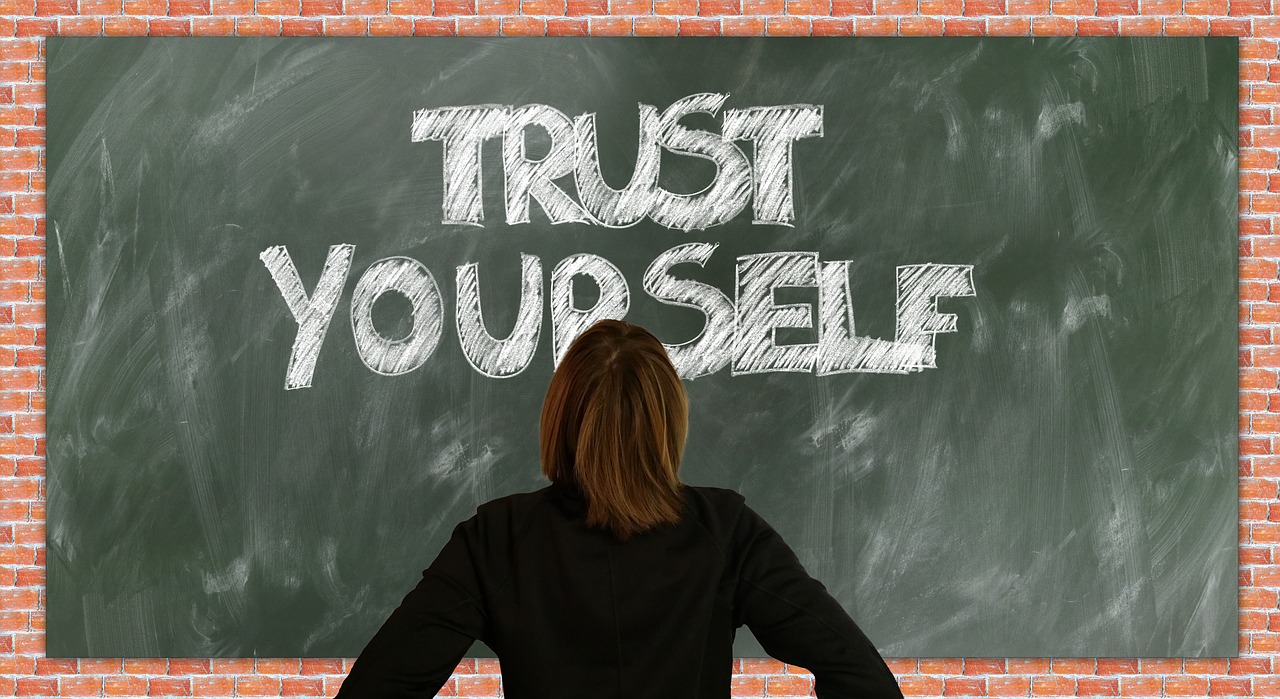
Emotional and Mental Resilience
This article explores how self-defense training can empower children, enhancing their confidence, discipline, and resilience while providing practical skills for personal safety.
Self-defense training teaches children essential skills to protect themselves while fostering confidence and self-awareness. It emphasizes personal safety, respect, and the importance of non-violent conflict resolution.
Engaging in self-defense training offers numerous benefits, including improved physical fitness, increased self-esteem, and the ability to handle difficult situations with composure and confidence.
Self-defense training enhances physical fitness through various exercises, improving coordination, balance, and overall health. These physical benefits contribute to a child's confidence and well-being.
Training programs often focus on building strength and agility, which not only aid in self-defense but also promote a healthy lifestyle and encourage children to stay active.
Children learn to react quickly and effectively in challenging situations, enhancing their reflexes and improving their ability to assess and respond to potential threats.
Self-defense training does wonders for a child's emotional and mental resilience. Imagine your child facing a stressful situation—be it a bully at school or a challenging task in life. The confidence gained from learning self-defense equips them with the tools to manage such pressures effectively. This training is not just about physical prowess; it's about developing a mindset that embraces challenges rather than shying away from them.
Through self-defense, children learn to navigate their emotions, transforming fears into strengths. They are taught techniques to calm themselves, focus their energy, and think clearly in high-pressure situations. For instance, a child might practice breathing exercises that help them center themselves before a sparring match or a stressful presentation at school. This practice doesn’t just apply to the dojo; it spills over into their daily lives, helping them tackle exams, social interactions, and other pressures with a newfound sense of calm.
Moreover, self-defense training fosters a sense of community. Children often train in groups, which helps them build supportive friendships. They learn to rely on each other, share experiences, and celebrate each other's victories. This social aspect is crucial; it teaches them the value of teamwork and the importance of having a support system. When they feel supported, they are more resilient in the face of adversity.
In essence, self-defense training cultivates a strong emotional foundation. It helps children develop:
- Stress Management: Techniques to manage anxiety and stress effectively.
- Confidence: A belief in their ability to handle difficult situations.
- Problem-Solving Skills: The ability to think critically and make quick decisions.
- Empathy: Understanding others' feelings and responding appropriately.
As they progress through their training, children not only become physically adept but also emotionally fortified, ready to face life's challenges head-on.
Selecting an appropriate self-defense program is crucial for your child's experience. Consider factors such as age, skill level, and the instructor's qualifications to ensure a positive learning environment.
Researching an instructor's background and experience is essential. A qualified instructor will create a safe and supportive atmosphere, ensuring that children learn effectively and confidently.
Understanding the program's structure and curriculum will help parents assess its suitability for their child. Look for programs that emphasize safety, respect, and practical skills.
- What age is appropriate for children to start self-defense training?
Most programs accept children as young as 5 years old, but it's best to check with specific schools for their age requirements. - Is self-defense training safe for children?
Yes, when conducted by qualified instructors in a controlled environment, self-defense training prioritizes safety. - How long does it take to see results?
Results vary, but many children notice improvements in confidence and skills within a few weeks of consistent training. - Can self-defense training help with bullying?
Absolutely! It empowers children to stand up for themselves and teaches them strategies to handle bullying situations.

Choosing the Right Training Program
When it comes to selecting the right self-defense training program for your child, it can feel a bit like navigating through a maze. There are so many options out there, and each promises to boost your child's confidence and skills. But how do you pick the one that truly fits? The key is to consider a few essential factors that will ensure your child has a positive and enriching experience.
First and foremost, think about your child's age and skill level. Not all programs are created equal, and what works for a teenager might not be suitable for a younger child. Look for classes specifically designed for your child's age group. This ensures that the training is age-appropriate and engaging. For instance, younger children might benefit from a program that incorporates fun games and activities, while teens may prefer more structured training that focuses on real-world scenarios.
Next, the qualifications and experience of the instructor play a crucial role in the training experience. A qualified instructor not only possesses the necessary skills but also knows how to teach those skills effectively. They should have experience working with children and understanding their unique needs. A good instructor will create a safe and supportive environment, allowing kids to learn and grow without fear of judgment. So, don’t hesitate to ask about their background, certifications, and teaching philosophy.
Additionally, understanding the program structure and curriculum is vital. You want to ensure that the program emphasizes safety, respect, and practical skills. Look for programs that incorporate a mix of physical training and mental preparation. A well-rounded curriculum should teach children not just how to defend themselves physically, but also how to avoid dangerous situations and handle conflicts peacefully. Here’s a quick overview of what to look for in a training program:
| Criteria | What to Look For |
|---|---|
| Age Appropriateness | Programs tailored to specific age groups |
| Instructor Qualifications | Certified instructors with experience in teaching children |
| Curriculum Focus | Emphasis on safety, respect, and conflict resolution |
| Class Size | Small class sizes for personalized attention |
Lastly, don't forget to consider the class size. Smaller class sizes often lead to more personalized attention from instructors, which can significantly enhance your child's learning experience. In a larger class, your child might not get the individual feedback they need to truly grasp the techniques being taught. It's always a good idea to observe a class before enrolling your child, if possible. This will give you a feel for the atmosphere and teaching style.
In conclusion, choosing the right self-defense training program is about finding the perfect fit for your child. By considering their age, the instructor's qualifications, the curriculum, and class size, you can help your child embark on a journey that not only equips them with self-defense skills but also boosts their confidence and resilience.
- What age is appropriate for self-defense training? Most programs offer classes for children as young as 5, but it's best to choose a program tailored to your child's specific age group.
- How long does it take to see results? Results can vary, but many children start to feel more confident and aware after just a few weeks of training.
- Is self-defense training safe? Yes, when conducted by qualified instructors in a supportive environment, self-defense training is generally very safe.

Instructor Qualifications and Experience
This article explores how self-defense training can empower children, enhancing their confidence, discipline, and resilience while providing practical skills for personal safety.
Self-defense training teaches children essential skills to protect themselves while fostering confidence and self-awareness. It emphasizes personal safety, respect, and the importance of non-violent conflict resolution.
Engaging in self-defense training offers numerous benefits, including improved physical fitness, increased self-esteem, and the ability to handle difficult situations with composure and confidence.
Self-defense training enhances physical fitness through various exercises, improving coordination, balance, and overall health. These physical benefits contribute to a child's confidence and well-being.
Training programs often focus on building strength and agility, which not only aid in self-defense but also promote a healthy lifestyle and encourage children to stay active.
Children learn to react quickly and effectively in challenging situations, enhancing their reflexes and improving their ability to assess and respond to potential threats.
Self-defense training fosters emotional resilience, teaching children to manage stress and anxiety. It equips them with coping strategies that can be beneficial in various life situations.
Selecting an appropriate self-defense program is crucial for your child's experience. Consider factors such as age, skill level, and the instructor's qualifications to ensure a positive learning environment.
When it comes to self-defense training, the instructor's qualifications and experience play a pivotal role in shaping your child's learning journey. A well-qualified instructor not only possesses the necessary technical skills but also has the ability to create a safe and supportive atmosphere for children. This environment is essential for fostering trust and encouraging students to step out of their comfort zones.
Before enrolling your child in a program, it's wise to conduct thorough research on the instructor's background. Look for qualifications such as:
- Certification in martial arts or self-defense techniques
- Experience working with children
- First aid and CPR certification
- Positive reviews or testimonials from previous students and parents
A qualified instructor should also have a clear understanding of child development and learning styles. This knowledge allows them to tailor their teaching methods to meet the unique needs of each child. For instance, younger children may require more engaging and playful approaches, while older kids might benefit from more structured and disciplined training.
Furthermore, the instructor's ability to communicate effectively is crucial. They should be able to convey complex concepts in a way that is easy for children to understand. This not only enhances the learning experience but also helps build the child's confidence in their ability to learn and apply new skills.
Lastly, don't overlook the importance of ongoing professional development. A dedicated instructor will stay updated on the latest self-defense techniques and teaching methodologies, ensuring that your child receives the best training possible. By choosing an instructor who is passionate about their craft and committed to continuous improvement, you can feel confident that your child is in capable hands.
1. What age is appropriate for my child to start self-defense training?
Most programs cater to children as young as 5 years old. However, it's essential to choose a program that matches your child's maturity level.
2. How long does it take to see results from self-defense training?
Results can vary, but many children start to feel more confident and aware of their surroundings within a few weeks of regular training.
3. Is self-defense training safe for children?
Yes, when conducted by a qualified instructor in a supportive environment, self-defense training prioritizes safety and personal growth.
4. What should my child wear for self-defense training?
Comfortable athletic wear and supportive footwear are generally recommended. Some programs may require specific uniforms.
5. Can self-defense training help with bullying?
Absolutely! Self-defense training equips children with the skills to assert themselves and handle bullying situations with confidence.

Program Structure and Curriculum
This article explores how self-defense training can empower children, enhancing their confidence, discipline, and resilience while providing practical skills for personal safety.
Self-defense training teaches children essential skills to protect themselves while fostering confidence and self-awareness. It emphasizes personal safety, respect, and the importance of non-violent conflict resolution.
Engaging in self-defense training offers numerous benefits, including improved physical fitness, increased self-esteem, and the ability to handle difficult situations with composure and confidence.
Self-defense training enhances physical fitness through various exercises, improving coordination, balance, and overall health. These physical benefits contribute to a child's confidence and well-being.
Training programs often focus on building strength and agility, which not only aid in self-defense but also promote a healthy lifestyle and encourage children to stay active.
Children learn to react quickly and effectively in challenging situations, enhancing their reflexes and improving their ability to assess and respond to potential threats.
Self-defense training fosters emotional resilience, teaching children to manage stress and anxiety. It equips them with coping strategies that can be beneficial in various life situations.
Selecting an appropriate self-defense program is crucial for your child's experience. Consider factors such as age, skill level, and the instructor's qualifications to ensure a positive learning environment.
Researching an instructor's background and experience is essential. A qualified instructor will create a safe and supportive atmosphere, ensuring that children learn effectively and confidently.
When evaluating a self-defense training program, understanding its structure and curriculum is vital. A well-structured program should incorporate various elements that cater to different learning styles and developmental stages. Look for programs that include:
- Progressive Learning: The curriculum should be designed to gradually introduce new techniques and concepts, allowing children to build on their skills over time.
- Safety Protocols: A good program emphasizes safety first, teaching children how to practice techniques safely and responsibly.
- Real-Life Scenarios: Incorporating practical applications of self-defense techniques helps children understand how to react in real-life situations.
- Positive Reinforcement: Programs that use encouragement and positive feedback can significantly boost a child's confidence and motivation.
Additionally, the curriculum should include a mix of physical training, mental exercises, and discussions about conflict resolution. This holistic approach not only equips children with self-defense skills but also fosters critical thinking and emotional intelligence. Parents should also inquire about the frequency of classes and the instructor-to-student ratio, as smaller class sizes often lead to more personalized attention and effective learning.
Q: At what age can my child start self-defense training?
A: Most programs accept children as young as 5 or 6 years old, but it's essential to choose a program tailored to your child's age and maturity level.
Q: Will my child learn to fight?
A: Self-defense training focuses on personal safety and conflict resolution, not promoting violence. The goal is to empower children to protect themselves and avoid confrontations whenever possible.
Q: How long does it take to see results?
A: Results vary by individual, but many children experience increased confidence and improved skills within a few weeks of consistent training.
Q: What should my child wear to training sessions?
A: Comfortable athletic clothing is recommended, along with proper footwear. Some programs may require specific uniforms.
Frequently Asked Questions
- What age is suitable for my child to start self-defense training?
Most self-defense programs are designed for children as young as 5 years old. However, the ideal age can vary based on your child's maturity and physical ability. It's best to consult with the instructor to find the right fit for your child.
- Will self-defense training make my child aggressive?
Not at all! In fact, self-defense training emphasizes respect and self-control. Children learn to handle conflicts peacefully and only use their skills when absolutely necessary. It's all about empowerment, not aggression!
- How can I find a good self-defense program for my child?
Look for programs that are age-appropriate and focus on safety, respect, and practical skills. Research the instructor's qualifications and experience, and consider visiting a class to see how they interact with the students.
- What should my child wear to self-defense classes?
Typically, comfortable athletic wear is best. Many programs may provide specific uniforms or gear, so it's a good idea to check with the instructor beforehand to ensure your child is properly equipped.
- How often should my child attend self-defense classes?
Consistency is key! Ideally, attending classes 1-2 times a week can help reinforce skills and build confidence. However, it ultimately depends on your child's schedule and enthusiasm for training.
- What are the physical benefits of self-defense training?
Self-defense training can improve your child's physical fitness, coordination, and balance. It also helps build strength and agility, which are essential not just for self-defense but for overall health and well-being.
- Can self-defense training help with my child's anxiety?
Absolutely! Self-defense training teaches coping strategies and helps children manage stress and anxiety. The skills they learn can boost their confidence and resilience in various life situations.
- Is self-defense training safe?
Yes, when conducted by qualified instructors in a controlled environment, self-defense training is generally safe. Instructors prioritize safety and ensure that children learn techniques in a supportive atmosphere.



